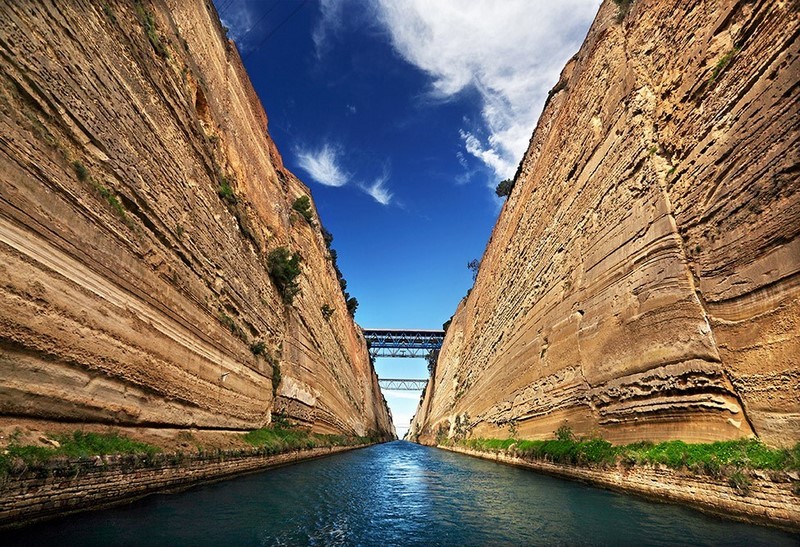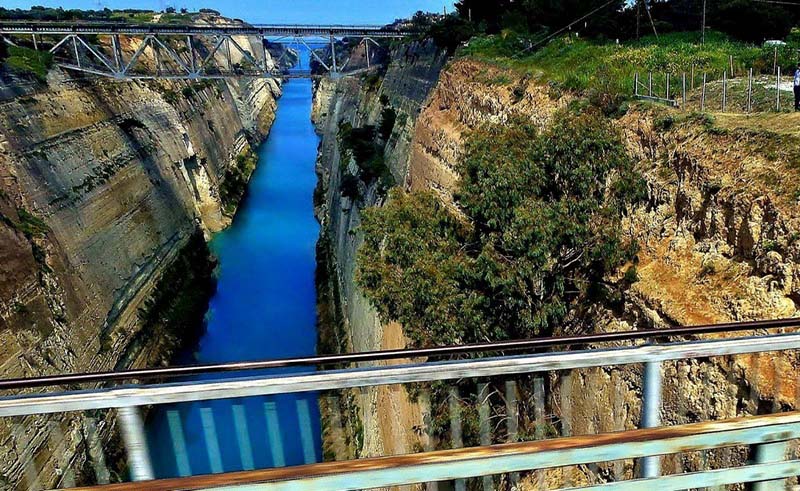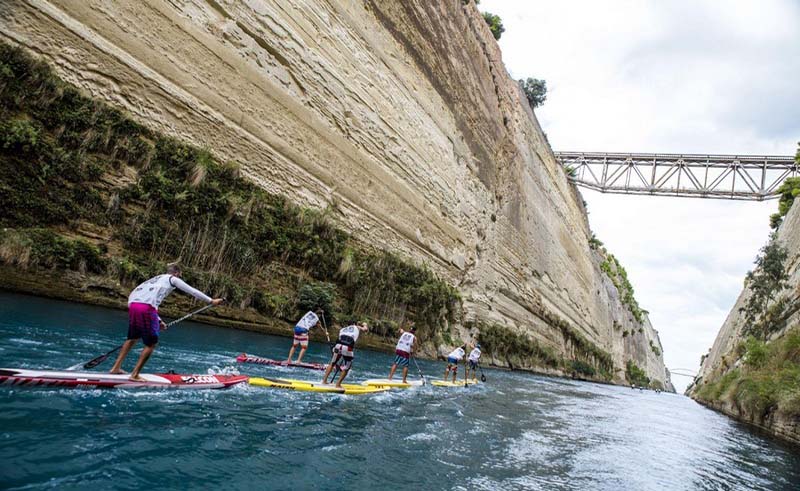The Corinth Canal (Isthmus)
About This Project
Description
One of the main attractions of Greece is the Isthmus, this narrow strip of land which connected the Peloponnese with Central Greece and where the canal has joined the Corinthian with the Saronic Gulf. The Corinth Canal / Isthmus used to be, from the ancient times, a strategic point for Greece since the opening would facilitate navigation and trade.
The first person who had the idea of the opening of the canal was the tyrant of Corinth Periandros, in 602 BC, who due to technical difficulties abandoned the project and instead he constructed the “diolkos”, an overland stone ramp on which they moved the ships from the one side of the isthmus to the other. Julius Caesar and Caligula studied and tried the opening again but they also failed due to lack of modern equipment. The first more serious attempt was made by Nero in 67 AD, who used thousands of workers, but after his death the project was abandoned once again. Herodes Atticus followed and also some efforts were made during the Byzantine Empire, but were also terminated for various reasons.
With the industrial revolution in the 19th century, the technological development ultimately allowed the implementation of an over-2000-year-old idea. After the opening of the Suez Canal the Greek government decided the “cut across the Isthmus”. The works began in April 1882 and after encountering many difficulties, the grand opening took place on July 25 1893.
The canal cuts across the Corinth Isthmus, in length of 6,346m. Its width at sea level is 24.6m and at the bottom of the sea 21.3m while its depth varies between 7.50 to 8m. The total volume of soil that was extracted for the construction reached 12 million cubic meters.
Today the Corinth Canal is an international marine transportation hub and serves about 12,000 ships, of all nationalities, a year. Also is the second most visited attraction in the country after the Parthenon, while there is also the possibility of sailing across it, arranged by tourist sailing boats of the area. At the Corinth Canal have taken place, and continue to take place, many sporting events, such as bungee jumping, swimming across the canal, stand up paddling (SUP), while large companies have implemented breathtaking activities such as flying with a small plane into the canal and jumping over the canal with a motorcycle at its highest point!





